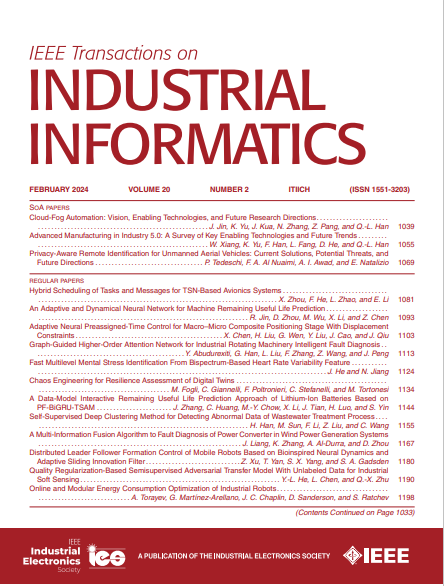基于物理信息神经网络的电容成像高精度缺陷定位方法
IF 9.9
1区 计算机科学
Q1 AUTOMATION & CONTROL SYSTEMS
引用次数: 0
摘要
非导电材料广泛应用于工业应用,特别是作为石油管道等金属结构的涂层。然而,这些非金属涂层容易受到腐蚀和划伤等因素的损坏,导致广泛的故障。这增加了对无损评估技术的需求,这种技术能够准确地量化这种材料中的缺陷参数。电容成像技术是一种新兴的电磁无损检测方法,在非导电材料缺陷检测中具有广阔的应用前景。然而,CI技术通常被用作检测可能存在缺陷的筛选技术,其在某些工程应用中至关重要的缺陷尺寸能力尚未得到探索。本文提出了一种基于物理信息神经网络的CI技术高精度缺陷评定方法。首先,分析了CI技术用于非导电材料缺陷检测的物理模型。得到了缺陷长度和宽度量化的物理公式,该物理公式后来被用作物理信息。然后进行有限元仿真,可视化CI传感器的灵敏度分布,分析缺陷信号的特征,将物理信息集成到神经网络中,使其能够从CI检测数据中量化缺陷参数。实验结果表明,该方法可以准确地确定缺陷的长度、宽度、深度和埋深。与其他神经网络结构和传统算法相比,该方法在缺陷量化方面具有更高的精度。本文章由计算机程序翻译,如有差异,请以英文原文为准。
High Precision Defect Sizing Method for Capacitive Imaging Based on Physics- Informed Neural Network
Nonconductive materials are extensively used in industrial applications, particularly as coatings for metal structures like oil pipelines. However, these nonmetallic coatings are prone to damage from factors, such as corrosion and scratches, leading to widespread failures. This increases the demand for nondestructive evaluation techniques capable of accurately quantifying defect parameters in such materials. Capacitive Imaging (CI) technique is an emerging electromagnetic nondestructive testing method with promising application prospects in defect evaluation in nonconducting materials. However, the CI technique is commonly used as a screening technique to detect the presence of possible defects, and its defect sizing ability, which is crucial in some engineering applications, has yet to be explored. This article proposes a high precision defect sizing method for the CI technique based on a physics informed neural network. First, the physical model of the CI technique for the detection of defects in nonconducting material is analyzed. A physical formula, which was later used as physical information, for the quantification of defect length and width was then obtained. Finite-element simulations were then conducted to visualize the sensitivity distribution of the CI sensor and analyze the characteristics of defect signals the physical information was integrated into a neural network, enabling it to quantify defect parameters from the CI detection data. Experimental results demonstrate that this method can accurately determine defect length, width, depth, and buried depth. Compared to other neural network structures and traditional algorithms, the proposed approach achieves superior precision in defect quantification.
求助全文
通过发布文献求助,成功后即可免费获取论文全文。
去求助
来源期刊

IEEE Transactions on Industrial Informatics
工程技术-工程:工业
CiteScore
24.10
自引率
8.90%
发文量
1202
审稿时长
5.1 months
期刊介绍:
The IEEE Transactions on Industrial Informatics is a multidisciplinary journal dedicated to publishing technical papers that connect theory with practical applications of informatics in industrial settings. It focuses on the utilization of information in intelligent, distributed, and agile industrial automation and control systems. The scope includes topics such as knowledge-based and AI-enhanced automation, intelligent computer control systems, flexible and collaborative manufacturing, industrial informatics in software-defined vehicles and robotics, computer vision, industrial cyber-physical and industrial IoT systems, real-time and networked embedded systems, security in industrial processes, industrial communications, systems interoperability, and human-machine interaction.
 求助内容:
求助内容: 应助结果提醒方式:
应助结果提醒方式:


